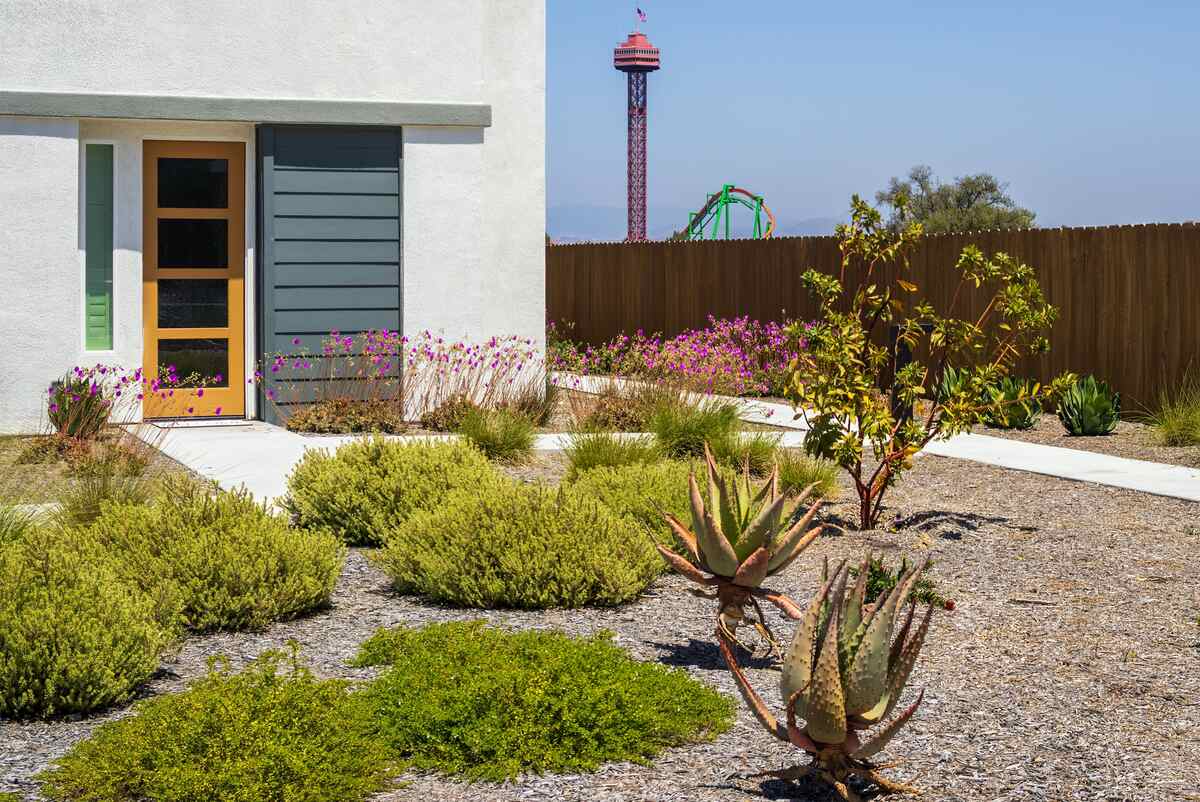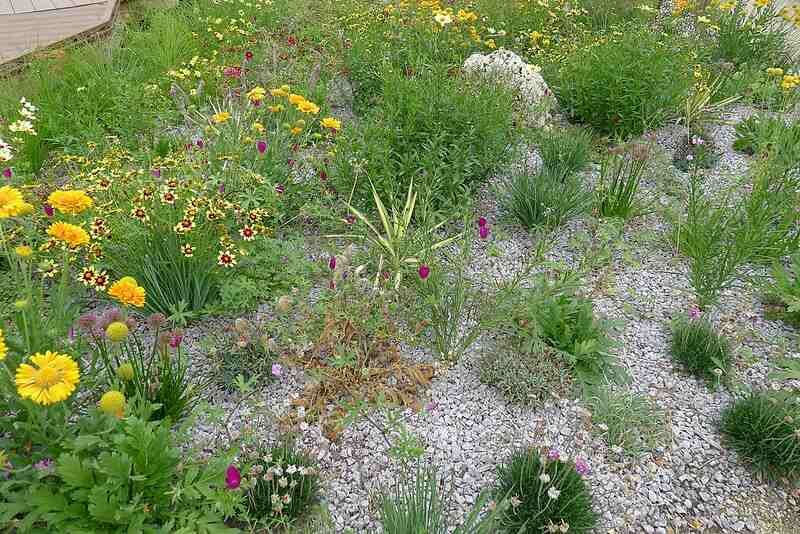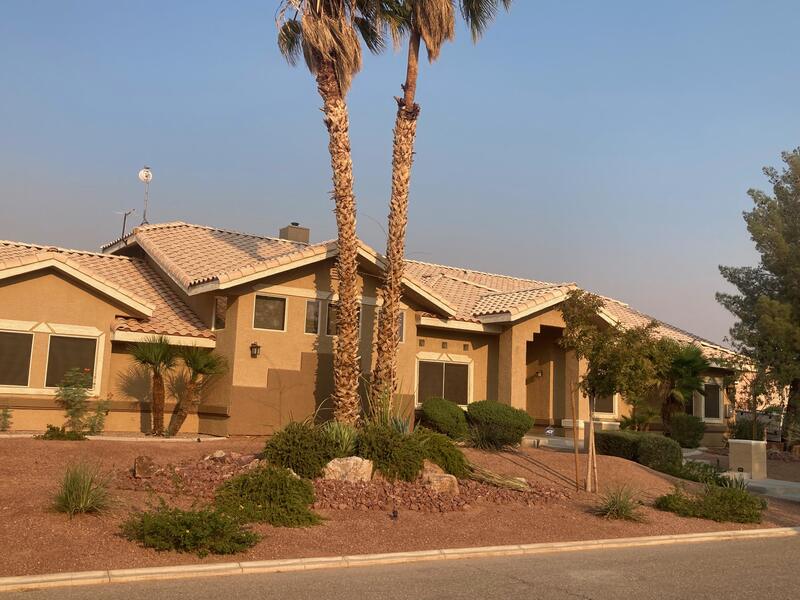
There are many benefits of xeriscaping, which increases your house’s property value while reducing water use, utility bills, and yard maintenance.
Xeriscaping’s main benefit, water conservation, affects not only your wallet but also your community. According to the U.S. Department of Agriculture, as many as 40 states are expected to experience freshwater shortages by 2030.
Discover the top reasons why xeriscaping may be a wise investment for your home:
7 Benefits of Xeriscaping
The benefits of xeriscaping include environmental benefits, time savings, cost savings, and aesthetic improvements to your landscape.
1. Conserves Water
Studies have shown that a significant amount of water is used on irrigating traditional turfgrass lawns. Colorado State University reports that over 50% of an average household’s water usage in the Western U.S. goes to outdoor watering.
Xeriscaping offers a solution. “Xeriscape yards are designed to use water efficiently, which helps reduce overall water consumption, protect water quality, and minimize runoff and erosion,” says Robyn Stewart, Lincoln County ANR agent at the University of Georgia.
For example, to water a 5,000-square-foot lawn the recommended 1 inch every week, you’d use 3,123 gallons of water per week. But according to Colorado WaterWise, a xeriscape can decrease outdoor water usage by up to 60%.
Pro Tip: If you’re ready to make the switch from a traditional turfgrass lawn to a water-wise landscape, hire a professional landscape designer to create a plan for your new landscape.
See Related:
- What is Xeriscaping?
- Best Plants for Xeriscaping
- A Beginner’s Guide to Drip Irrigation Systems
- How to Mulch Your Yard: A Step-by-Step Guide
2. Reduces Maintenance

Most of us have booked schedules that leave little time for lawn care. According to the University of Arkansas, the average homeowner spends 2 hours a week (8 hours per month) on yard and garden care for traditional landscapes. But xeriscaping reduces the time needed for yard maintenance by at least half, to an hour a week or less.
In sum, if you remove half your lawn, for the average yard, that means it should take about half an hour per week to mow. Cleaning beds, pruning, and deadheading should take no more than 1-2 hours per month. That’s 3-4 hours or maintenance per month, compared to 8 hours for an average lawn.
You’ll likely spend more time in spring and fall (mulching, cleaning) to open and close the seasons. But in general, there won’t be much weekly upkeep required.
See Related: Native Grasses: Are They Right for Your Lawn?
3. Saves Money
Xeriscaping might have expensive upfront installation costs, but once you are set, it will save you a considerable amount on ongoing costs.
| Factor | Cost Savings |
| Lawn Equipment and Equipment Maintenance (minimum savings for a gas mower) | $511 |
| Mowing Service (minimum savings per mow if you remove all mowable turf) | $49 |
| Fertilizer Application (savings per application) | $289 |
| Water bill savings (per month) | $22 |
Lawn equipment costs: Saves $422 or more
With xeriscaping, you have less grass to mow. Some xeric landscapes even remove all turfgrass.
- Lawn mower: A typical walk-behind lawn mower costs an average of $322.
- String trimmer: On average, the prices for a string trimmer range from under $100 to over $400
Lawn mower repair and maintenance costs: Saves a minimum of $89 for a gas mower
Xeriscaping reduces lawn mower repair costs, which range from $75 to $550. You will also need to think about the costs of refueling and maintaining your mower.
- Fuel: You will need to pay for gasoline (around $3 per gallon) or a new battery ($70 to $350).
- Mower blades: Expect to pay $5 to $30 per blade for professional blade sharpening. Replacing your mower blades costs $25 to $30 each.
- Air filters: A new lawn mower air filter costs $6 to $25.
Lawn mowing costs: Saves $49 to $147 per mow
Fertilizing costs: Can save up to $289 or more per application
Water costs: Saves $22 a month or more
The average water bill costs $73 for a family of four, and roughly half of that will go towards watering your landscape. Xeriscaping reduces your outdoor water costs by up to 60%.
Rebate incentives: Saves hundreds or thousands of dollars
4. Increases Property Value

A well-designed xeriscape can increase your property value and boost your home’s curb appeal.
“Research from Virginia Tech, Michigan State University, and others suggest that attractive and thoughtfully designed landscaping can increase property values by 5% to 15%,” says Stewart.
Stewart says that key factors influence how a xeriscape increases property value, including:
- Size and types of plants used
- The diversity of plantings
- Overall sophistication and cohesion of the landscape design
“Xeriscapes—like other well-planned landscape designs—can positively impact home value, though results may vary depending on the quality and execution of the design,” says Stewart.
In addition to increasing property value and curb appeal, a xeriscape “contributes to a more attractive neighborhood, reduces local crime rates, and results in improved mental and physical well-being for residents,” says Stewart.
5. Protects the Environment
Another advantage of xeriscaping is that it promotes biodiversity by providing natural habitats for local wildlife and protects the environment.
- Protects water resources: The biggest advantage of water-wise landscaping is its ability to conserve valuable water resources. “Xeriscapes rely on native or regionally adapted plants and limit the use of turf, which can reduce mowing and water use significantly,” says Stewart.
- Promotes biodiversity: Xeriscaping with native plants “can have a positive impact on biodiversity, providing habitat and food for pollinators, birds, and other species,” says Stewart.
- Supports pollinators: You can use native plants to build a pollinator garden to attract bees and butterflies.
- Reduces chemicals: Xeriscape plants don’t often need chemical pesticides or fertilizers. “Traditional landscapes often use large lawns and non-native ornamental species which require significant use of water, fertilizers, and pesticides, and mowing to maintain,” says Stewart.
- Decreases carbon emissions: Less mowing reduces energy usage and air pollution.
“These landscapes also help lower ambient temperatures around the home, improve air quality, and can even reduce noise pollution,” says Stewart.
6. Climate Resilience
Xeriscaping uses drought-friendly plants with low water requirements, such as plants that are able to withstand drought or local water restrictions.
Thanks to their low watering requirements, xeriscaping plants are less susceptible to dying or going dormant when your area experiences a long dry spell.
See Related:
7. Year-Round Visual Interest

Aside from being a practical landscaping choice, xeriscapes are visually appealing, too. There is no shortage of xeriscaping ideas that will improve curb appeal by filling your yard with a colorful array of flowers, rocks, and lawn decor.
- A spot to hang out: Create a recreational space outdoors by adding benches or outdoor seating.
- Yard decorations: Add visual decorative elements, such as lawn ornaments, pots, statues, or other lawn decor.
- Plant diversity: Create a colorful landscape by mixing hardy shrubs, wildflowers, ornamental grasses, cacti, and drought-tolerant ground covers.
FAQ About Benefits of Xeriscaping
The average xeriscaping project costs between $15,120 to $18,400 with installation. Pricing varies depending on several factors, including:
• Materials used
• Location
• Climate
• Soil
• Garden size
Although there are many benefits to drought-tolerant landscaping, there are a few disadvantages to consider when planning to xeriscape:
• Time investment: Considerable time and effort will be spent on researching, planning, and installing a xeriscaping garden.
• Appearance: “Xeriscaping can alter the look of a yard, potentially reducing the amount of green space and lush vegetation, which some may find less appealing,” says Chris Blaha, an agriculture technician at NC State University who has taught classes on xeriscaping for the past 7 years and personally installed dozens of xeriscapes.
• Less value as a recreational space: “Replacing grass with mulch or rock can limit the use of the yard for recreational activities, such as playing sports or letting pets run free,” says Blaha.
• Contributes to the heat island effect: Blaha says, “Xeriscaping can contribute to the heat island effect, particularly if large areas of hardscape are used.”
• Reduced water quality: “Xeriscaping can contribute to increased sediment loading and nitrate leaching, potentially polluting waterways,” says Blaha.
Enjoy the Benefits of Xeriscaping
Tired of maintaining a traditional turfgrass lawn? Find a local landscape designer today to help you with xeriscaping ideas so you can create the perfect xeriscape for your home.
Sources:
- Chris Blaha, agriculture technician at NC State University Extension, Barco, NC. Personal interview.
- “How We Use Water.” United States Environmental Protection Agency.
- “Make Every Drop Count: Managing a Water-Wise Landscape.” By Sheri Dorn, senior public service associate & state master gardener coordinator. University of Georgia.
- Robyn Leigh Stewart, University of Georgia’s Lincoln County ANR Agent, Lincolnton, GA. Personal interview.
- “Simple Irrigation Audit for Home Lawns in Oklahoma.” By Justin Q. Moss, turfgrass research and Extension specialist, John E. Haase, Extension horticulturist, Dennis L. Martin, Extension turfgrass specialist, Jason R. Vogel, Extension stormwater specialist, and Tracy A. Boyer, agricultural economist. Oklahoma State University.
- “The 7 Principles of Xeriscape Landscaping.” By John Murgel, horticulture agent. Colorado State University.
- “Tips and Tricks for Mowing Your Lawn.” By Samantha Horn, county Extension agent. University of Arkansas System Division of Agriculture Research and Extension.
- “Uniting to Combat Water Shortages Across the Country.” By Erika Cross, USDA farm production and conservation. U.S. Department of Agriculture.
- “Water Fact – Worldwide Water Supply.” Bureau of Reclamation.
- “Xeriscape Colorado.” Colorado WaterWise.
- “Xeriscaping: Creative Landscaping.” By C. Wilson, Extension horticulture agent, J.R. Feucht, Colorado State University Extension landscape plants specialist and professor, and Susan Carter, Extension horticulture agent. Colorado State University.
Main Image Credit: Pexels